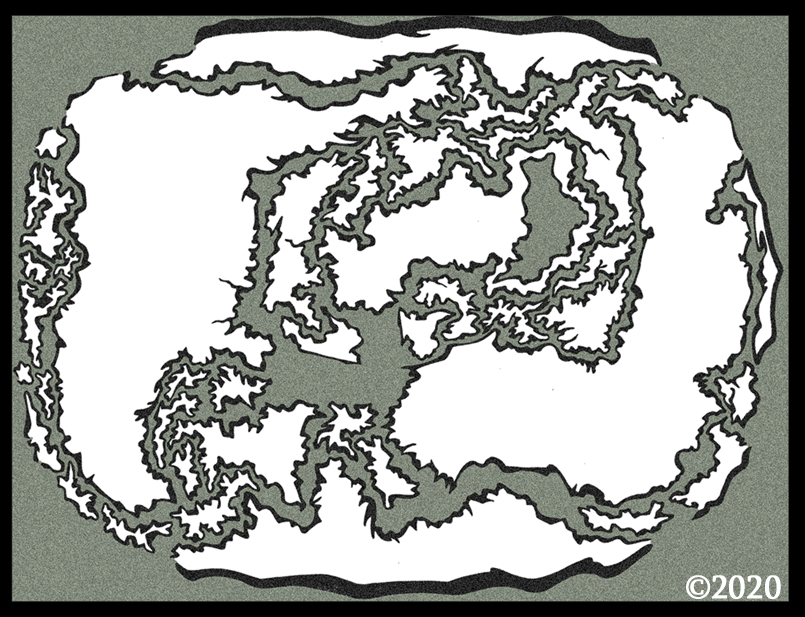This is where you will find all the information publicly available for the lifeforms on Planet O-oot, including descriptions and pictures (with some stat blocks maybe eventually too).

In the most basic of categorizing terms, Plant O-oot’s biological lifeforms are divided up into three broad categories. More exist (microbial, bacteria, etc), but they are not as fundamental in understanding this world’s unique challenges:
Inactive Plants Rooted plants which mostly behave like plants from Earth. They function as a complex biological binary computer which is able to react and adapt to the environment without having any cognitive awareness. | |
Active Plants Still rooted into the ground, but much more aware and interactive with their environment. These organisms have the ability to think and react in real time, as well as knowingly hunt for food. | |
Planimals The closest lifeforms to Earth animals in terms of behavior; they move around the planet freely and only willingly root as a passive alternative to collecting other sources of energy. These critters range in degrees of dangerous, but share in common a lack of fear towards humans and aliens. The more predatory have even developed a preference for hunting man over their fellow moss-furred brethren. |

In addition to the three distinct categories of lifeforms on O-oot, there have been 7 types of environmental biomes described on the planet. It seems that both plants and planimals have their preferred biomes wherein they will be found in the highest percentages. These same creatures can also be found out of their preferred environment, but it is most likely a case of the lifeforms migrating to the next nearest biome.
Grasslands exist on the highest altitudes of the planet, where hill tops tend to flatten. A wide range of deadly and poisonous grasses grow here, along with predatory creatures that rely on speed. |
Forests take up most of the “middle zone” in altitude, with different spots dominated by specific species of inactive trees. Most lifeforms here hunt by ambush and most prey relies on hiding in the organic density surrounding them. |
Junkyards are a unique phenomenon on O-oot, generated from centuries of space junk getting pulled into it’s atmosphere and collecting in… piles. What lives here has adapted to leech off of the toxic chemicals and materials surrounding them, though they are desperate for a bit of fresh meat. |
Caves exist all over O-oot, with their entrance location not usually linked to elevation. Smaller caverns exist, but more often the back, or a fork, connects to one of the planet’s greatest wonders; the grand cave system. It spans across the entire world and hasn’t been well mapped. What is known is that a lot of predatory planimals already use it to move across the land without being spotted. |
Swamplands replace the oceans on planet O-oot. There is no actual ocean, but a variety of degrees between wetland, marsh, bog and such. Many lifeforms here specialize in drowning prey, dependent on the micro organisms to begin breaking down the dead matter before they can digest it. |
Oveen Poles are very cold, but not solid ice like on Earth. The magnetic poles of this planet are home to few things besides opportunistic scavengers. The air is so thin that breathing aids are necessary. |
Glock Island sits dead center between the two major continents. It’s profile is unique as the only place to have a desert on the entire planet. What lives here isn’t much, besides a gigantic terraform machine of unknow origins. |
